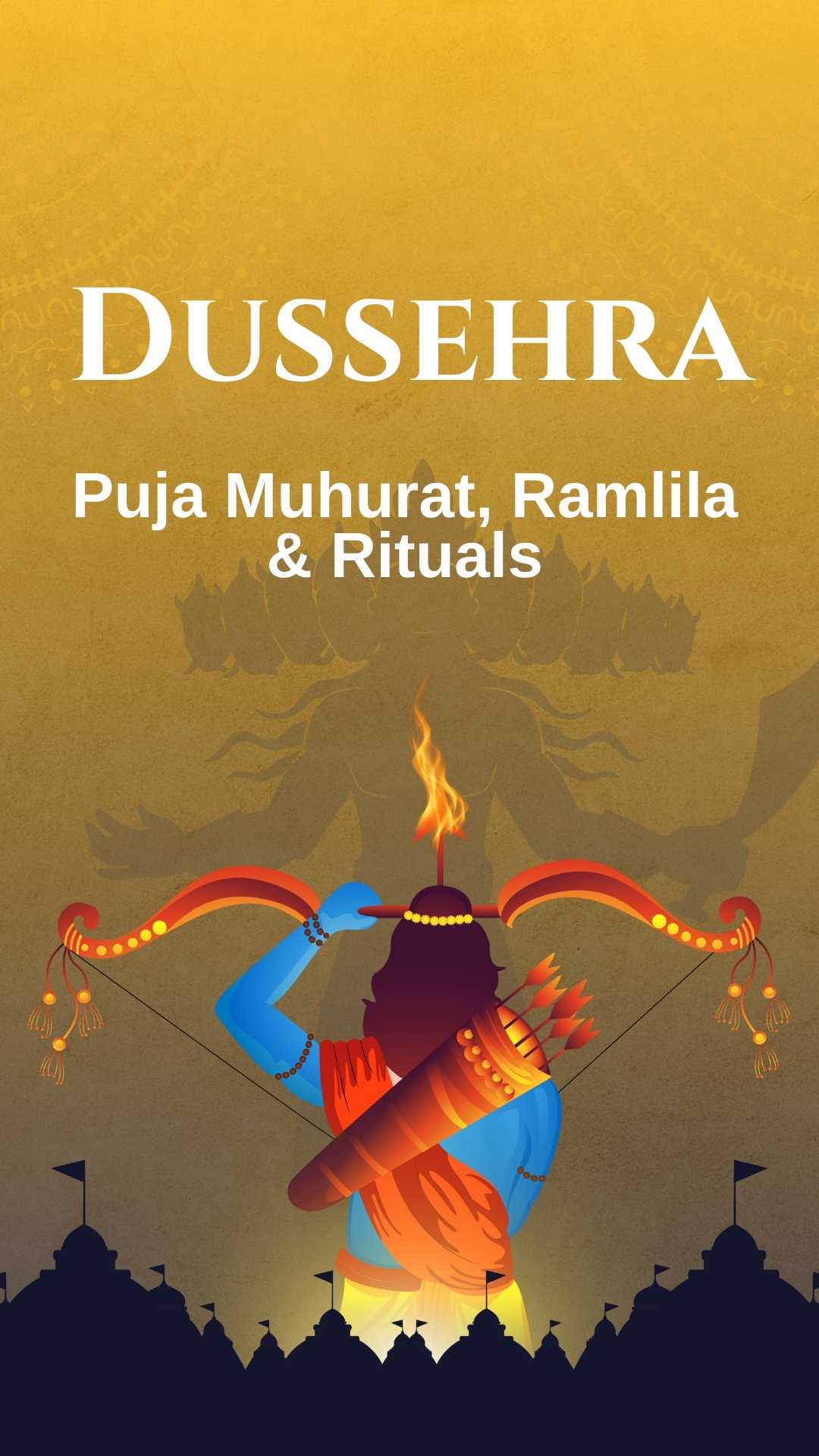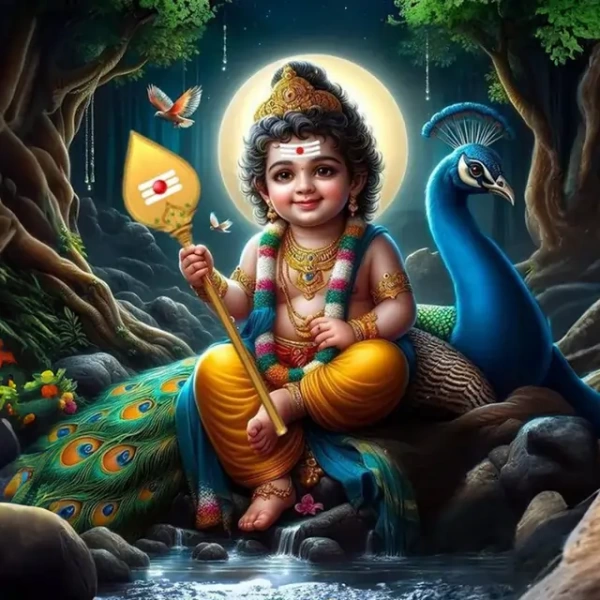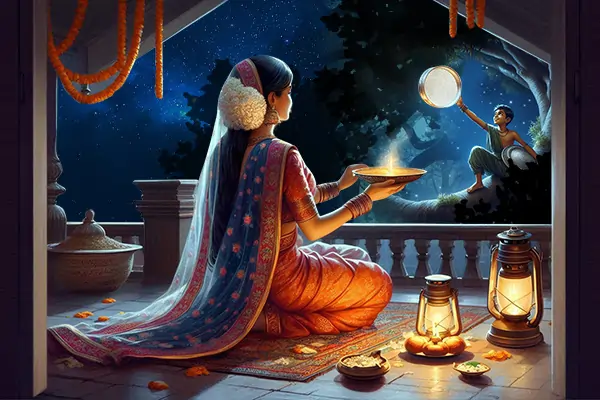Introduction to Dussehra 2025
Dussehra, also known as Vijayadashami, holds a special place in Hindu culture as the grand celebration of the victory of good over evil. The date for the festival in 2025 is eagerly anticipated, as Dussehra (Vijayadashami) 2025 will be observed on October 2, marking the culmination of the nine-day festival of Navratri. This auspicious occasion not only honors Lord Rama’s heroic triumph over Ravana but also coincides with the conclusion of Durga Puja, commemorating Goddess Durga’s victory over the demon Mahishasura. It connects deeply with earlier festivals like Ram Navami. The ongoing Navratri celebrations weave a vibrant tapestry of devotion, tradition, and spiritual renewal.
Also Read- Festival in October 2025: Complete List of Hindu Festivals
Mythological and Spiritual Significance of Dussehra
Dussehra epitomizes the ultimate victory of righteousness and divine justice. According to the Ramayana, Lord Rama defeated the powerful demon king Ravana on this day. This symbolizes the triumph of good over evil, truth over falsehood, and light over darkness. Similarly, Durga Puja, culminating on Vijayadashami, celebrates Goddess Durga’s valiant victory over Mahishasura after nine days of fierce battle. It embodies courage, purity, and cosmic order. These interconnected mythologies reinforce the festival’s spiritual message. Steadfast devotion and virtue lead to the destruction of negativity and the restoration of harmony.
Dussehra 2025: Puja Muhurat and Rituals
Puja Muhurat for Dussehra 2025
Devotees observe specific auspicious timings (muhurat) on Vijayadashami to conduct rituals. In 2025, the ideal window for performing Dussehra puja varies slightly by region. However, it generally spans mid-morning to early afternoon on October 2. Checking local Panchang and muhurat calendars ensures precise timings for worship and Ramlila events.
Key Rituals Observed
- Ganesh Puja: Devotees begin by invoking Lord Ganesha to remove obstacles and bless the proceedings.
- Shami Puja: Worshippers honor the Shami tree, considered sacred and symbolic of valor and victory, by offering flowers, fruits, and leaves.
- Shastra Puja (Weapon Worship): A vital ritual where weapons and tools representing power and protection are worshipped. This signifies the divine energy that destroys evil.
- Main Vijayadashami Puja: Prayers and offerings to Lord Rama and Goddess Durga to seek their blessings for courage, victory, and prosperity.
- Havan and Aarti: Sacred fire rituals purify the environment. This is followed by aarti to conclude the puja with devotional songs and lamp offerings.
Ramlila: The Theatrical Heart of Dussehra
Ramlila, a dramatic enactment of the Ramayana, forms the cultural soul of Dussehra celebrations. Communities across India perform this multi-day play. It depicts Lord Rama’s life and his heroic battles culminating in the defeat of Ravana. The grand finale, often the Ravana Dahan (burning of Ravana’s effigy), enthralls millions, symbolizing the eradication of evil forces.
These performances not only reinforce moral and spiritual teachings related to duty, honor, and faith but also foster community cohesion and cultural preservation. Many families and localities eagerly prepare for Ramlila weeks in advance, making it a vibrant social occasion.
Regional Celebrations: Diversity of Traditions
- North India: Massive Ramlila performances and grand Ravana effigy burnings dominate the festivities. Cities like Varanasi, Delhi, and Jaipur attract crowds for elaborate processions.
- West Bengal and Eastern India: Durga Puja reaches its climax with Vijayadashami. It features emotional Visarjan rituals—immersing the goddess’s idol in rivers, symbolizing her celestial return.
- South India: Vijayadashami overlaps with Ayudha Puja, where people worship tools, vehicles, and books, marking renewed beginnings. Educational institutions often commence new academic years.
- Maharashtra and Gujarat: Alongside traditional pujas, people engage in energetic Garba and Dandiya dances. This energy carries the festive spirit into Vijayadashami.
- Other Regions: Folk dances, fairs, and special culinary delights imbue local flavor into the celebrations, showcasing India’s cultural richness.
Fasting and Vrat Vidhi during Dussehra
Many devotees observe fasting on Vijayadashami or the preceding Navratri days. Fasting practices vary, ranging from strict abstinence of grains and heavy foods to consuming only fruits, milk, and vrat-specific dishes like sabudana (tapioca pearls). The fast emphasizes spiritual cleansing and focus. After the puja and havan, devotees break their fast with prasad, sharing in community meals that reinforce social bonds.
Dussehra’s Link to Other Festivals
Dussehra naturally complements and concludes the Navratri and Durga Puja festivals. It brings the celebration of divine feminine energy and cosmic victory into focus. It follows Ram Navami, which celebrates Lord Rama’s birth, framing the Ramayana narrative into a cyclical spiritual journey throughout the year. This integration of festivals enriches the spiritual depth and cultural continuity in Hindu tradition.
Modern-Day Celebrations and Cultural Impact
Today, Dussehra spans traditional rituals and contemporary festivities. Mega Ramlila shows and Ravana effigy burnings draw tourists and devotees alike. Urban centers host cultural programs, fairs, and community prayers, while social media amplifies the reach and participation worldwide. The festival also boosts local economies through increased demand for decorations, costumes, sweets, and religious paraphernalia.
Mythology Behind Dussehra
The core story of Dussehra emerges from the epic Ramayana, where Lord Rama, an avatar of Lord Vishnu, wages a heroic war against Ravana. Ravana is the demon king of Lanka who abducted Rama’s wife, Sita. The battle signifies the cosmic struggle between dharma (righteousness) and adharma (evil). After a fierce ten-day battle culminating on Vijayadashami, Lord Rama defeats Ravana, restoring justice and dharma to the world.
Concurrently, Dussehra aligns with the culmination of Navratri festivals that celebrate Goddess Durga’s victory over Mahishasura. According to legend, Mahishasura received a boon making him invincible to men and gods, leading him to wreak havoc. The gods created Durga as the divine mother with fierce power. She triumphed over Mahishasura after nine days of combat, culminating on Dussehra.
Dussehra Puja Rituals
Devotees across India observe elaborate rituals on Vijayadashami:
- Preparation: Homes and temples are cleaned and decorated with flowers and lights; some prepare intricate rangoli artwork.
- Ganesh Puja: The puja opens with the worship of Lord Ganesha, remover of obstacles.
- Shami Puja: Devotees collect and worship leaves from the Shami tree. This is believed to bring blessings, prosperity, and the valor of Lord Rama’s army.
- Weapon Worship: Farmers and warriors clean and decorate their tools and weapons, showing gratitude for protection and success.
- Main Puja: This includes chanting from sacred texts like Ramayana and Durga Saptashati. Offerings such as fruits, sweets, and flowers are presented to the deities.
- Lighting Lamps and Havan: Propitiation through fire offerings cleanses the environment spiritually.
- Aarti and Distribution of Prasad: The puja concludes with aarti, invoking divine blessings, and distributing prasad to family and community members.
Regional Variations of Celebrations
- In Varanasi, Dussehra invokes grand processions and efforts to uphold the sanctity of river Ganges through rituals.
- Kullu Valley in Himachal Pradesh celebrates with vibrant bull races and fairs alongside traditional pujas.
- Mysore Dussehra in Karnataka is internationally famous for its royal procession, decorated elephants, and cultural extravaganza held in Mysore Palace.
- Gujarat and Rajasthan mark the day with folk dance.
Ayurvedic and Spiritual Benefits of Dussehra 2025
The fasting, rituals, and spiritual focus of Dussehra offer holistic benefits:
- Detoxifying the body through vrat fasting helps rejuvenate physical health.
- Chanting of ancient hymns and mantras during puja promotes mental peace and spiritual focus.
- Community celebrations boost social well-being, cultural pride, and emotional joy.
Dussehra Festival in the Digital Era
- Virtual Ramlila performances reach audiences worldwide, bolstering cultural connection amidst globalization.
- Social media hashtags and interactive platforms encourage participation through online prayers, storytelling, and DIY decor tutorials.
- Online shopping for festival essentials surges, supporting local artisans and businesses.
Tips for Observing Dussehra 2025 at Home
- Set up a clean, decorated altar with idols of Lord Rama, Goddess Durga, and Lord Ganesha.
- Mark puja timings from trusted Panchang sources; prepare offerings in advance.
- Organize small family Ramlila readings or view local performances virtually.
- Prepare traditional festive foods like puris, halwa, and fruits to share.
- Encourage children to learn the story of Ramayana and the importance of virtues celebrated during Dussehra.



1 Comment